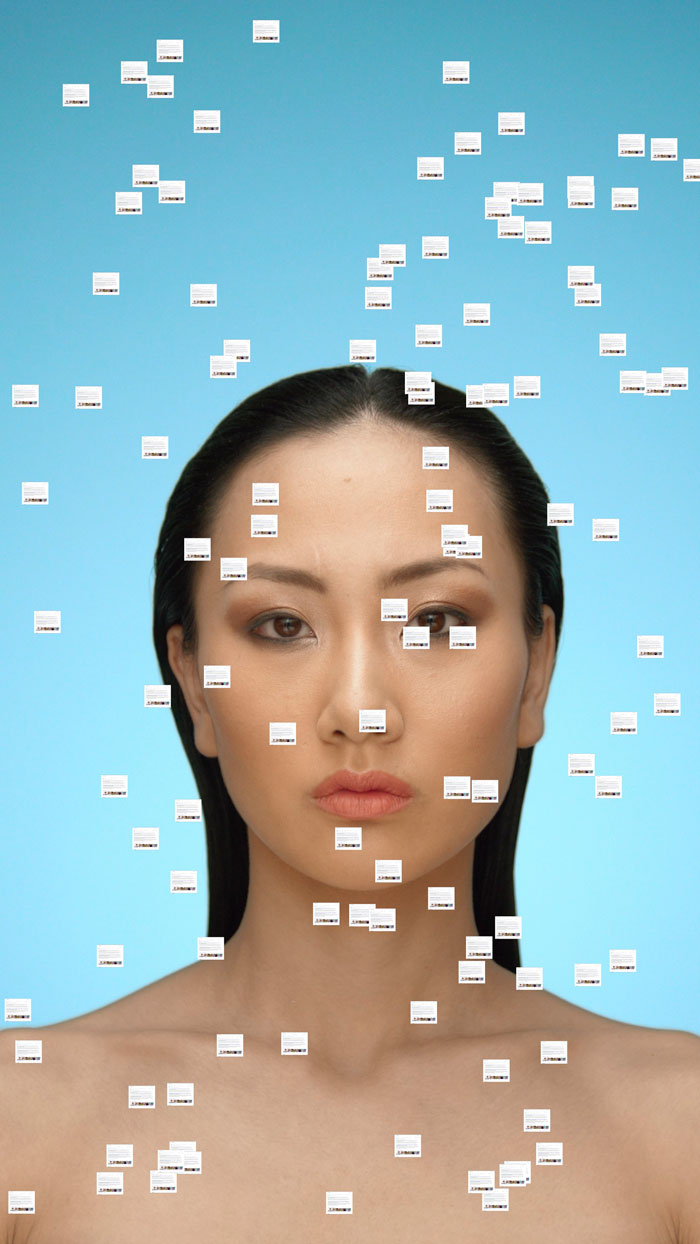


Tiffany Trenda
"The Vanishing Portrait"July 11- August 3, 2019
Reception: Saturday, July 13, 6-9pm
Artwalk preview: Thursday, July 11, 7-9pm
https://vanishingportrait.com/
The Vanishing Portrait exhibition is a new body of work that explores the discrimination in technology. The work comments on a specific bias in today’s social media and other online platforms. Furthermore, these racist technologies can have severe outcomes on female minorities. For example, what happens to the future generation of women who see pornographic material when they search for themselves through Google (“Asian Girls”)? Or how Instagram has over fifteen filters but yet, most of them lighten the skin. By continuing the history of whitewashing portraiture, society as a collective, are continuing the history of discrimination.
Part of the issue is there should be more diversity of people working in the tech sector but the problem goes much deeper. Social media reflects the public consciousness. We must as a collective, understand how images, tags, and interactions online can emotionally impact a person.This exhibition will show digital prints and documentation from a current exhibition of work at the Scottsdale Museum of Contemporary Art.
Bio
Tiffany Trenda is a new media performance artist based out of Los Angeles. She received her BFA from Art Center College of Design and her MFA from the UCLA, Design and Media Arts program. Trenda won Artist of the Year at the LICC Awards in 2008. She has performed at Los Angeles County Museum of Art, CONTEXT Art Miami, Broad Art Museum, Scope Art Fair, A+D Museum, Los Angeles Contemporary Art Exhibitions, Boulder Contemporary Art Museum, and the 2010 World Expo in Shanghai, China. Trenda was included in the performance program at the Metamorphoses of the Virtual – 100 Years of Art and Freedom during the 55th annual Venice Biennale and in 2017 she was on a panel for SXSW. Trenda has exhibited at the Faena Art Center in Buenos Aires, Laboratorio Arte Alameda in Mexico City, and Art Center Nabi in South Korea.
Artist Statement
Trenda's performances and installations explore the relationship of the human body, particularly the female body, to technology. She interchanges her identity with screens to represent how we conceal and reveal ourselves through our devices (smart phones, computers, etc.). As these devices become an integral part of our daily lives, we relate to them as if they are part of our skin. Therefore, we are constantly choosing between the physical and the simulation of our bodies through virtual realities, social media, etc. We are no longer living in the present but through the screen. This changes how we form memories and how we interact with the outside world.This site and its entire contents © 2004-2019 Los Angeles Center For Digital Art
All Rights Reserved.Works of individual artists remain the intellectual property and are copyrighted by their respective authors. No unauthorized reproduction, all rights reserved.
|
|


